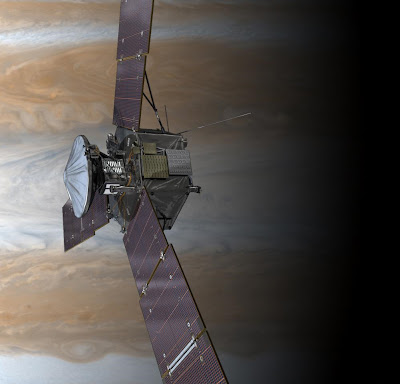Jupiter is probably the best place in the solar system to study how the magnetic fields of planets are generated.
The Juno spacecraft will make the five-year, 400-million-mile voyage to Jupiter and orbit the planet, collecting data for more than one Earth year.
CREDIT: NASA/JPL-Caltech
A NASA probe that is traveling through space on its way to Jupiter is expected to help astronomers unlock mysteries about the largest planet in our solar system when it arrives there in 2016.
NASA's Juno mission was launched in August 2011 to study how Jupiter formed and evolved. After a five-year journey, the spacecraft is expected to arrive at the gas giant planet in August 2016.
Jupiter has long intrigued astronomers, from the planet's distinct surface features and complex weather systems to its mysterious origin and evolution, said Fran Bagenal, a professor of astrophysical and planetary sciences at the University of Colorado in Boulder, and a co-investigator on the Juno mission.
"People have been looking at this exterior since the time of Galileo," she said. "[But] we know very little of what's inside. We're sending Juno out there to Jupiter to try to understand the origin and evolution of Jupiter, [to] try to explain how much water there is, what it's like inside, what the atmosphere is like."
Bagenal discussed the exciting results the Juno mission is expected to yield in a session on June 11 here at the 220th meeting of the American Astronomical Society.
Once the solar-powered Juno spacecraft is captured into orbit around Jupiter, the probe will map the planet's magnetic and gravitational fields to learn more about the interior structure of Jupiter.
[Photos: NASA's Juno Mission to Jupiter]







No comments:
Post a Comment